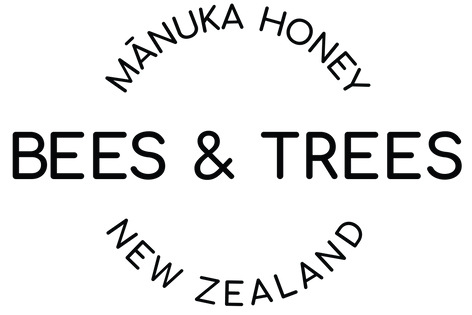
Did you know that the oldest honey in the world is 3,000 years old? Archeologists discovered it in 2015 in the tomb of the deceased Pharaoh, King Tut. The honey is believed to have been stored there to keep him happy in the afterlife. It’s almost impossible to believe that the honey was still in perfect condition for consumption, but it was! Did the Egyptians have secret knowledge about honey storage that we don’t know? Let’s find out.
The use of honey is traced back to 8,000 years ago, as shown in some Stone Age paintings. [1] This amazing food source has been important for thousands of years and is known to last for very long periods. This article will cover everything you need to know about honey, from what it is, if it does go bad, instances where it may spoil, and how to preserve it. We might not show you how to preserve it for 3,000 years, but we’ll show you how to ensure your honey lasts for a long time.
What is Honey?

Honey is a sweet, thick, golden liquid created by bees through a complex dehydration process in the beehive. We spread it on bread, add it to tea, and apply it on wounds, but how is it really made?
Honey is made by honeybees using nectar from flowering plants. They extract nectar from flowering plants using their tube-shaped tongue and store it in the honey sac. The nectar mixes with enzymes in the sac, which changes its composition and pH. The honeybee regurgitates the fluid in her sac and passes it on to other bees once back at the hive. Other bees take turns swallowing and regurgitating the liquid until it’s finally stored in a honeycomb cell. As each bee sucks the liquid into their honey sac through their proboscis, some protein is added, and water is evaporated.
Once in the honeycomb, the bees continue processing it and evaporating more water. The combination of the hive’s temperature and the ventilation created by fanning bees causes even more evaporation. Once the water content is below 20%, the honey is “ripe,” and the bees seal it with an abdominal secretion which turns into beeswax. Once the process is complete, the honey can be stored indefinitely and serve as a great food source during cold winter periods. This precise process ensures that the honey doesn’t ferment or degrade during storage.
Types of Honey

Honey’s composition varies based on the floral source, which makes every type of honey different from the other. [1] There are more than 300 unique types of honey in the United States, every one of them from a different floral source. The aroma, color, and flavor are influenced by the nectar of the flowers that the bees visit.
There are many shades of honey, ranging from almost translucent to a deep, dark brown, which can signify the honey’s strength (flavor). Generally, light-colored honey is usually milder, like clover honey, while dark-colored honey is typically more potent, like Manuka honey.
So, Does Honey Go Bad?

No, honey doesn’t go bad. Honey is not a perishable product. As long as it is stored well, in a clean, air-tight, and moisture-free environment, it will be safe to consume for a very long time.
After that short detour on how honey is made (which was necessary) and the types of honey, it’s time to answer what really brought you to this article: Does honey go bad? The answer is no; honey doesn’t go bad.
If you remember, the oldest honey is 3,000 years old, and there are many reasons why it has stayed good for that long. Here are a few:
-
Honey Has a Low Moisture Content
Honey is made up of about 80% sugar and about 17% water. [2] From the dehydration process we described in the section above, bees seal honey once the content is less than 20%. This little water content makes it inhospitable for bacteria and mold, which require moisture to thrive. Additionally, honey is very dense, making it impossible for oxygen to penetrate. This cuts off the oxygen bacteria need to live, contributing to the honey’s evergreen freshness.
-
Honey Is Acidic
Honey contains organic acids like oxalic, citric, and malic acids, which play a role in its natural preservation qualities. However, the main acid found in honey is gluconic acid which is formed as a result of a reaction between glucose and the enzyme glucose oxidase. The presence of organic acids gives honey a higher pH, making it unfavorable for microbial growth. [3]
-
Honey Has Natural Antimicrobial Properties
Honey boasts of natural antimicrobial properties and enzymes which suppress bacterial growth. A 2014 scientific review observes that honey’s antimicrobial properties are attributed to mechanisms like: “acidity (low pH), osmotic effect, high sugar concentration, and presence of bacteriostatic and bactericidal factors (hydrogen peroxide, antioxidants, lysozyme, polyphenols, phenolic acids, flavonoids, methylglyoxal, and bee peptides).” [4] A 2004 study also showed honey’s ability to inhibit the growth of food spoilage organisms and foodborne pathogens. [5]
A particular type of honey with potent antimicrobial properties is Manuka honey. Manuka honey has a very high level of methylglyoxal (MGO) which is formed from dihydroxyacetone (DHA) which correlates with its unusually high antibacterial activity. [6]
These three properties make it pretty difficult for honey to go bad unless it is adulterated or stored incorrectly, as discussed below.
But Why Does Honey Have an Expiration Date?

Since honey doesn’t go bad, let’s address why it normally has an expiration date stuck on the label. According to the Food Safety and Inspection Service, manufacturers usually provide product dating to help users and sellers understand when food is of the best quality, meaning expiry dates are not necessarily indicators of a product’s safety. If you have ever noticed, most honey packers use a “sell by” date. This date typically helps stores with their inventory management and gives store owners guidance on how long they should display the product. It does not speak to the viability of a product. [7]
Manuka Honey’s Special Case: Normally, Manuka honey has a “best by” date of three years after packing. Expiry dates in Manuka honey are primarily used to indicate the product quality. This is because Manuka honey derives its potency from its MGO levels which grow over time and then begin to decline. And once the MGO levels decline, the honey loses its potency as well. To read more about how MGO levels decline over time, click here.
Instances Where Honey Can Go Bad

Honey is an expiry-proof product that can go for months, years, and even thousands of years (as in the case of King Tut) without spoiling. However, you can buy bad honey if you are not cautious. Some of the potential issues in the U.S honey market that you need to be aware of include:
-
Fermentation
Fermentation is not a common issue because of the low moisture content and high sugar concentration of honey, as we mentioned earlier. However, when moisture content exceeds 19%, osmophilic yeasts begin to grow. They utilize the sugar in honey as a source of energy and form ethanol and carbon dioxide, which triggers fermentation.
-
Adulteration
Honey can go bad if it is adulterated. Adulteration is making honey impure by adding inferior substances. Adulteration can be direct or indirect. Direct adulteration happens when substances like molasses are added to honey. Indirect adulteration happens when bees are fed with sugars, which results in low-quality honey. In indirect adulteration, chemicals, industrial sugars, and sugar syrups are fed to bees during the nectar flow period. Indirect adulteration can also happen when a bee hive is located near a sugar/soft drink processing plant, as the bees will naturally forage in the factories instead of flowering plants. [9]
Adulteration is a challenge that the US faces with honey imports from Asia. According to a 2020 review, China and Venezuela blend acacia honey with cheaper honey (rapeseed honey) to increase their profits as the rapeseed color honey is almost similar to acacia honey. [9] Adulteration has adverse effects on consumers and can cause abnormal weight gain, diabetes, obesity, and high blood pressure.
To avoid buying adulterated honey, you can check to see if the honey you want to purchase is certified. For instance, Bees & Trees is one of the first and only Manuka honey to be certified by GenuHoney certification. GenuHoney is on the front lines battling the problem of honey fraud in US markets and the impact it has on US beekeepers.
-
Inappropriate storage
Honey storage plays a significant factor in its freshness. The best containers for storing honey are glass and stainless steel containers. You can also use containers coated with food-approved plastic, beeswax, or paint, especially if you use large barrels. It’s very easy to transfer odor into honey, so in case recycled containers are used, they should be cleaned thoroughly to eliminate any residual odor.
How to Store Honey for Maximum Freshness

A lot of the storage tips covered in the section above mostly affect manufacturers and honey sellers. However, there are several things you can do at home to ensure maximum honey freshness and avoid crystallization of honey. They include:
-
Use an Airtight Container
Honey is easily affected by environmental elements like odor and moisture. Honey can easily absorb odors in the air, and due to its hygroscopic nature, it can also absorb moisture. This can affect its color and taste. So, make sure you use an airtight container when storing your honey. Also, make sure you close your jar of honey tightly after use.
-
Store Honey in a Cool, Dry Area
Honey is highly hygroscopic; even a small amount of moisture can cause it to ferment. So, store your honey in a dry area without high humidity. As an extension to this pointer, do not refrigerate your honey.
Refrigerating your honey doesn’t make it last longer. In any case, it makes your honey deteriorate faster as it absorbs moisture in the fridge, which affects its rich taste and color. “Honey with a water content of 18.3 % or less usually absorbs moisture from the air at a relative humidity of above 60%.” [10]
-
Keep Honey Away From Contaminants
Honey can be easily contaminated with odor and moisture. Make sure that you use clean and dry utensils anytime you are scooping honey from the jar to avoid ruining your honey.
-
Store Honey in the Right Containers
To ensure your honey stays fresh for a long time, store it in good quality containers. Glass or plastic jars will do. Glass is chemically inert, waterproof, and airtight. Plastic, on the other hand, has high chemical resistance, high tensile strength, and is airtight.
-
Store Honey at Room Temperature
Honey is best stored at room temperature. However, do not store it near a window or a place with high or varying temperatures, as that can cause your honey to change in taste and crystallize. Long-term storage under high temperatures normally affects the quality of honey.
If you are not too sure about where to store your honey, we recommend having it out on the counter. It’s not too hot or too cold there. Additionally, seeing your jar of honey on the counter can be a great reminder to scoop some for the day.
Is Crystallized Honey Harmful?

No, crystallized honey is not harmful. According to Whendi Grad, a fourth-generation beekeeper, "Honey will darken and/or crystallize, but it is still safe to eat." [11]
Honey normally crystallizes when sugar separates from the water and forms monohydrate glucose crystals which may differ in shape, dimension, and number based on honey composition and the storage conditions. The amount of water, glucose content, temperature, and the presence of particles like pollen, normally affects how quickly crystallization occurs. If honey has lower water content and high glucose content, crystallization will happen faster.
How to Decrystallize Honey

If your honey crystallizes, you can use any of the methods below to decrystallize it:
Method 1: Fill your pot with hot water (from the faucet or boiled). Place your jar of honey in the water. Once the water cools, remove your jar of honey. Repeat until your honey is fully decrystallized. We recommend using a glass jar for this process.
Method 2: Fill your crockpot partially with water. Put your crockpot on low and ensure the temperature is warm enough. Put your jar of honey in the crockpot and let it sit undisturbed for 6-8 hours. Remove, dry, and store it at room temperature.
Summary

In conclusion, honey does not go bad, and you do not have to worry about that jar of honey that you haven’t used for the past month or year. It is still suitable for consumption. So get a spoon and dig into it without worry.
We hope that the tips we’ve shared with you will help you preserve your honey for longer. It may not be 3,000 years like King Tut’s honey, but you sure can make it an extra few months or years of absolute freshness.
Bees & Trees works to produce the best Manuka honey possible. We treat our honey with the utmost care to avoid contamination. We always test our harvested honey to make sure that it is authentic and commercially viable. You only get the best and freshest Manuka honey when shopping at Bees & Trees. In case you’re running out, jump to our store now to replenish your stock.
FAQ:
1. Why do we put honey in glass?
-
Glass is inert and cannot react with any of the chemical components present in honey. Therefore, it helps keep honey safe from contamination.
-
Glass is sustainable and can be recycled over and over again without losing its quality. Additionally, it is GRAS-certified by the FDA, meaning it is a safe packaging method.
2. Is honey better in glass or plastic?
It is better to store honey in glass jars because glass is inert and does not leach. This means it cannot react with the chemical components in honey.
Appendix
-
https://www.ncbi.nlm.nih.gov/pmc/articles/PMC3758027/
-
https://pubmed.ncbi.nlm.nih.gov/8880294/
-
https://pubmed.ncbi.nlm.nih.gov/23782759/
-
https://pubmed.ncbi.nlm.nih.gov/15527912/
-
https://www.ncbi.nlm.nih.gov/pmc/articles/PMC6613335/
-
https://www.fsis.usda.gov/food-safety/safe-food-handling-and-preparation/food-safety-basics/food-product-dating
-
https://pubmed.ncbi.nlm.nih.gov/24214851/
-
https://www.ncbi.nlm.nih.gov/pmc/articles/PMC7692231/
-
https://www.fao.org/3/w0076e/w0076e04.htm
-
https://www.allrecipes.com/article/does-honey-go-bad/







